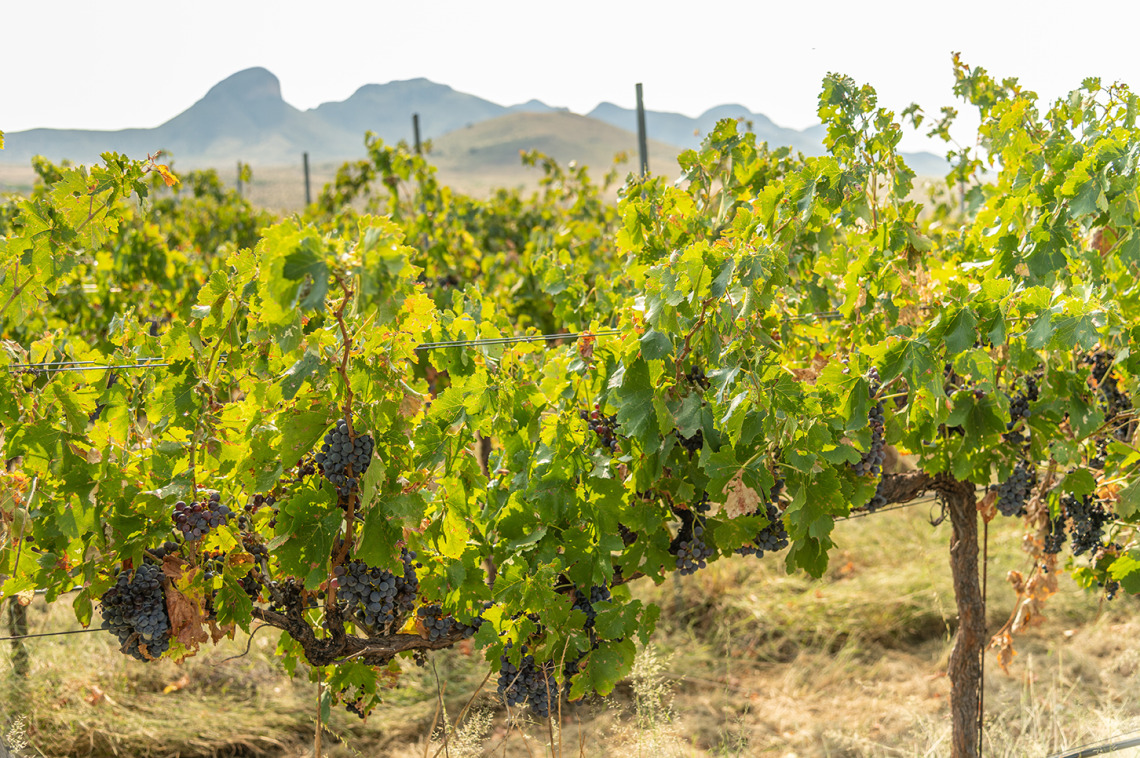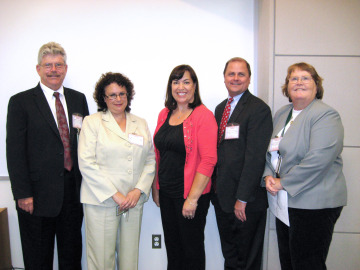Safeguarding agriculture’s future
CALES alum Eileen Smith spent her career protecting U.S. agriculture from invasive and economically devastating pests, now she’s giving back to honor her family’s history and support women in the field.

AdobeStock

Eileen Smith
Eileen Smith, class of ‘79 and ‘82, comes from a family with rich agricultural roots. Her great-great grandfather, Owen Conneran, immigrated to the United States from Ireland in the 1850s. His son, John, would migrate from Lakehurst, New Jersey, to northern Minnesota, where the family farm and generations of Connerans would cultivate several thousand acres of wheat, potatoes and, eventually, sugar beets.
Smith’s own passion for agriculture would bring her to Tucson, where she studied horticulture and received both a Bachelor and Master of Science from the University of Arizona College of Agriculture, Life and Environmental Sciences. Taking courses in plant pathology, biology, and organic chemistry, as well as learning about the plants and biodiversity of the desert Southwest, helped prepare her for a nearly 30-year career with the U.S. Department of Agriculture Animal & Plant Health Inspection Service (USDA APHIS).
With the mission to safeguard U.S. agriculture and natural resources against the entry, establishment, and spread of economically and environmentally significant pests, Smith worked in the USDA APHIS Plant Protection and Quarantine program and spent the first ten years of her career inspecting arriving ships, aircraft, passengers, and international cargo at the Ports of Los Angeles and Long Beach.
“A lot of invasive pests can be transported to the country on international cargo, or through someone’s suitcase,” Smith said. “We were the first line of defense.”
As a national emergency coordinator and program manager, Smith would go on to lead efforts to monitor, control, and eradicate some of the country’s most destructive pests, including Old World bollworm, pale cyst nematode, palm weevil, exotic fruit flies, and, most notably, the European grapevine moth.
“The European grapevine moth program was a complex project,” she said. “If it was unsuccessful, the pest could have wiped out the whole wine industry in California, as well as table grapes, stone fruit and other perishable agricultural commodities.”

Eileen Smith (right, and pictured here with her core team) received the USDA APHIS Administrator’s Award in 2016 for the successful eradication of European grapevine moth (EGVM) in California.
First detected in the U.S. in September of 2009, the European grapevine moth is best known for its threat to mature grape clusters, as well as its ability to damage plants through a potentially deadly infection of a fungus called botrytis, also known as bunch rot.
Working alongside industry partners, Smith and her team coordinated a sweeping effort to get ahead of the moth. Timing was everything and within thirty days, the team began deploying an environmentally friendly approach called mating disruption, where a species-specific sex pheromone is released to prevent males from finding a mate.
“The mating disruption process included getting EPA registration and approval, plus lining up the production and distribution of the product within a 30-day period, which was unheard of at the time,” Smith said. “If it wasn't accomplished like that, we would have had uncontrolled, spreading populations of this pest, which would have made it extremely difficult and costly to eradicate.”
The team had 90% of the European grapevine moth infestation under control within in a year and, thanks to Smith’s coordination, the pest was declared successfully eradicated in the state of California in August of 2016.
Over the course of her career, Smith would manage and coordinate multimillion dollar national risk and emergency invasive plant pest programs on economically significant commodities, such as grapes, potatoes, citrus, wheat, stone fruit, palms, and vegetables.
“It’s creative problem solving, there was no one standard answer or solution to a problem,” Smith said. “You had to think outside of the box and be creative.”
Her experience would establish Smith as a national expert, and she was often called to consult on a variety of international plant pest programs, bringing her to Chile, Mexico, Guatemala, and South Africa.

Eileen Smith (left) poses with friends and fellow volunteers from her time in service to the Peace Corps, at the organization's 50th anniversary in Washington D.C. Smith spent two years as a Peace Corps volunteer in southern Africa, assisting farmers improve their methods in sustainable agriculture and developing potable water systems for local communities.
Smith retired from the USDA in 2016, but that doesn’t mean her jet-setting lifestyle has slowed down. She continues to travel all over the world—a passion ignited by her time of service in South Africa as a member of the Peace Corps.
Recently, she journeyed back to Ireland to see where her family began. Tracing her family’s history and genealogy had been a project she shared with her late mother and her siblings.
“I inherited about 12 boxes of photos and documents from all of them,” said Smith, who has been connecting the dots and filling in the unknowns for the last several years. “My family were true pioneers, they contributed significantly to advancing U.S. production agriculture. It’s a tremendous legacy for future generations.”
That history inspired Smith to establish an endowment to continue her family’s contributions to agriculture.
“I wanted to continue the legacy of my great grandfather, John, who established our family farm and homestead. I wanted to support the future of agriculture,” she said. “The world has changed, unless we get younger generations involved in agriculture and farming, the family farm will disappear.”
The Eileen Smith Endowment will award full or partial academic scholarships to UArizona College of Agriculture, Life and Environmental Sciences students. The scholarship program will also work to support women in agricultural science, she said.
“Working in agriculture and government, I noticed there’s a lot of men and not enough women. Women are very creative, we need that. We need new ideas; we need people who think outside the box.”
Smith continues to think outside of the box herself and is always mulling her next steps, which she said may include writing a children’s book to help younger generations discover agriculture and will certainly include a lot more travel.
“I plan to travel to Australia, New Zealand and Antarctica in the next few years and possibly Portugal and Scotland,” she said. “My bucket list seems to get longer by the day.”

